Let’s dial back the clock 40 years and return to the early days of the Reagan Era – when Pontiac made a last-ditch effort to keep the Trans-Am from becoming a re-skinned Camaro powered by the same Chevy-built V-8 found under other the hood of its sister “F” car.
The Pontiac-built 400 that powered the TA during its Great Days in the mid-late ’70s (when hundreds of thousands were made each year) was gone – killed off by GM corporate over concerns about the big-cube Pontiac V8’s fuel economy and getting it past federal emissions rules. The Pontiac V8, which dated back to 1955, needed an update – but GM didn’t want to spend money on it – so no more were made after 1978 and the last ones (left over in inventory) were installed in a few lucky “T/A 6.6” 1979 Trans-Ams (and even fewer Formulas).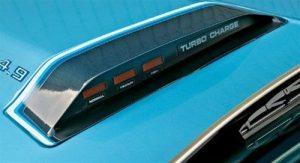
Rolling into the 1980 model year, the Trans-Am was in real danger of being seen as a toothless, over-heavy Gimp.
Its only engine choices were a Chevy-built 305 or the little 4.9 liter 301 V8, the last Pontiac-made V8 still being manufactured.
The downsized 301 had been conceived as an “economy” engine for lower-caste Pontiacs – not Trans-Ams.
It had only a two-barrel carburetor at first, a very low compression ratio and a block and heads made of relatively fragile, lightweight materials – all intended to take weight off the front end of the cars into which it would be installed – and to reduce fuel consumption.

No thought was given to the 301 as a potential performance engine when it was conceived.
But by 1980, Pontiac had no other V8 of its own to work with, and if the Trans-Am was to remain Pontiac-powered then Pontiac would have to work with the 301.
Turbocharging, at that time, was becoming popular as a way to goose the output of a smaller engine “on demand” while keeping the fuel economy reasonable the rest of the time. Buick, in particular, had done a lot of work in this area and was having some success with its turbocharged 3.8 liter V6 engine – a powerplant that would become famous for its performance by the mid-late ’80s in the Buick Regal Grand National and GNX.
Buick’s efforts probably inspired engineers within Pontiac to consider turbocharging the 301 V8, which circa 1979 was producing all of 150 horsepower – or 70 horsepower less than the ’79 T/A 6.6 liter Trans-Am’s 400 V8.
How to bridge that gap?
First, the foundations.
A specially reinforced block, for openers. A unique cam, with more lift and duration than the standard 301 stick. And of course, turbo-specific exhaust plumbing, along with a low-restriction dual outlet exhaust system similar to the ’79 T/A 6.6 400 V8s, which got two mufflers and pipes aft of the catalytic converter rather than the standard single pipe all the way to a single muffler and dual tips coming out of the muffler.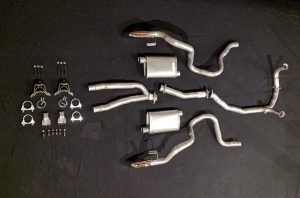
Capping it off was an AIR Research turbo that fed compressed air to the engine through a specially calibrated Rochester Quadrajet four-barrel carb.
This resulted in 210 hp at 4,000 RPM and even better, 345 lbs.-ft. of torque at 2,000 RPM.
On paper, this looked promising. The 301 turbo’s rated output was only 10 hp off the rated output of the last 400 V8, despite the deficit of almost 100 cubic inches of displacement. And the 301 turbo’s rated torque output was actually higher – and came on sooner (345 lbs.-ft. at 2,000 RPM vs. 320 lbs.-ft. at 2,800) than the 400’s.
Actual performance, therefore, ought to be very close, ’79 vs. ’80.
Maybe even better, given the torque advantage.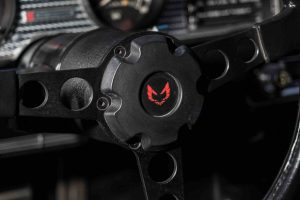
Unfortunately, it didn’t shake out that way. For one, the actual power output of the T/A 6.6 400 was almost certainly underrated. The published peak hp of 220 and the 4,000 pound ’78-’79 TA’s factory stock low 15 second quarter miles times and 130-plus top end speed don’t line up.
The car’s performance indicates the The 400 V8 was probably making closer to 270 hp. The 301 turbo’s 210 hp rating was much more honest given the 1980-’81 Trans-Am’s 16 second quarter mile time and top speed of around 118 mph.
The turbocharged Trans Am suffered another handicap, too. It was not offered with a manual transmission – whereas the ’79 T/A 6.6 400 had only been sold with a 4 speed manual. The reason? Pontiac, despite its best efforts, could not emissions certify the 301 with a manual transmission. In the days before engine management controls and especially, electronic fuel injection, getting a manual-equipped car through the certification process was very difficult.
The best Pontiac could do was fit a “performance calibrated” three-speed TurboHydramatic automatic to the car. Which actually could have worked as turbo’d cars work well with automatics due to their low-RPM torque production. If there’s a loose torque converter. If the final axle ratio is aggressive enough.
But that hurts MPGs and Uncle hurts car companies that hurt MPGs.
Another problem with the 301 turbo was that it was carbureted. Carbs and turbos don’t work well together – chiefly because carbs can’t meter the fuel as precisely and also because the turbo must “blow through” the carburetor – and carbs are by design intended to operate under vacuum, not boost.
The final nail in the 301’s coffin was its not-ready-for-prime-time electronic controls.
Like early jet engines, the 301 turbo was still going through its teething phase when it was put into a production car. It had a great deal of potential – like the Buick 3.8 V6 – but it was hard to see it through the enfeebled performance, even when things were working right.
Had Pontiac been given time to massage the technology, the 301 turbo almost certainly would have matured into one of the most formidable performance engines of the ’80s.
Doubters should look across the aisle to the miracles Buick eventually worked with the 3.8 liter turbocharged V6, which was also a gimp at first.
But that changed.
EFI, intercooling and digital controls turned this engine into the most powerful production engine GM made in the mid-late ’80s, when it was installed in Regal Grand Nationals and GNXs.
These were cars capable of low 13 second quarter mile times and 150 mph top speeds right off the showroom floor.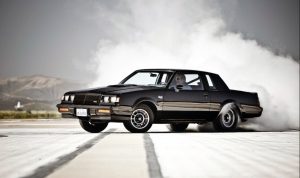
Indeed, the ’89 20th Anniversary Trans-Am equipped with the turbo Buick V6 engine was the first Trans-Am in 15 years to beat the performance stats of the ’73-’74 SD-455 Trans-Am.
Pontiac clearly hoped it would get the chance to develop the 301 to its full potential. And for a brief moment, it seemed as though that was going to happen.
When the redesigned third generation 1982 Trans-Am appeared, it had an offset “turbo bulge” hood scoop, just like the ’80-’81 Turbo Trans Am.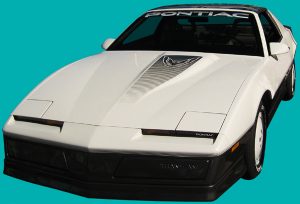
The car’s front subframe was designed to accommodate the Pontiac V8, too.
In the smaller, much lighter third generation Trans Am, a 250-300 hp turbocharged 301 would have been a tremendous performer. Probably, it would have been quicker and faster than the Buick Regal Grand National given the same advances in EFI/intercooling – especially with two more cylinders and more displacement to bring to bear – in a more aerodynamic and lighter package.
A five-speed equipped, mid-1980s Turbo Trans-Am would have been a memorable ride. With a real Pontiac V-8 under its hood, it would have retained its Pontiac personality – as well as assured its future collectibility.
And very possibly, the survival of Pontiac.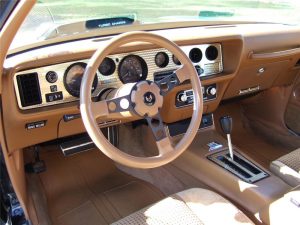
Unfortunately, GM management decided to kill the development of the Pontiac V-8 altogether. The 301 would be the last-ever Pontiac V8.
Beginning with the ’82 model year, all Firebirds from that day forward to the final year of production in 2002 would have the same engines as the Chevy Camaro. That meant from ’82-up, there was no meaningful difference under the hood between a Camaro Z28 and a Trans-Am.
Arguably, this is the thing that eventually killed off the Firebird line itself. And eventually, Pontiac too.
After all, why bother with the (so-called) Pontiac when the same car was being sold for less money at the Chevy store? It’s true there were exterior and interior differences, but these were superficial. The Pontiac’s still-beating heart had been ripped out of its engine bay – and the transplanted Chevy mill could never provide more than artificial life support.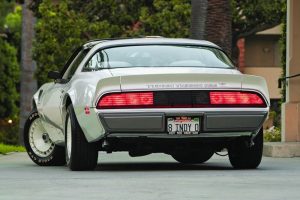
It’s sad to ponder what might have been.
Had Pontiac been given the chance to work out the 301’s bugs, not only might the Trans-Am have survived to the present day, but Pontiac itself might have also. By taking away its unique, Pontiac-built V-8, General Motors took away the fundamental quality that made a Pontiac different – and thus, desirable. It took away the reason for people to buy a Pontiac – since without a unique, Pontiac-built engine, the cars it was selling were just rebadged Chevys and Buicks.
Eventually, people stopped caring about Pontiac.
And that was the end of Pontiac. Even though the name gimped on for almost another 20 years – before someone remembered to turn off the lights at last.
. . .
Got a question about cars, Libertarian politics – or anything else? Click on the “ask Eric” link and send ’em in!
If you like what you’ve found here please consider supporting EPautos.
We depend on you to keep the wheels turning!
Our donate button is here.
If you prefer not to use PayPal, our mailing address is:
EPautos
721 Hummingbird Lane SE
Copper Hill, VA 24079
PS: Get an EPautos magnet or sticker or coaster in return for a $20 or more one-time donation or a $10 or more monthly recurring donation. (Please be sure to tell us you want a magnet or sticker or coaster – and also, provide an address, so we know where to mail the thing!)
If you’d like an ear tag – custom made! – just ask and it will be delivered.
My latest eBook is also available for your favorite price – free! Click here. If that fails, email me at [email protected] and I will send you a copy directly!


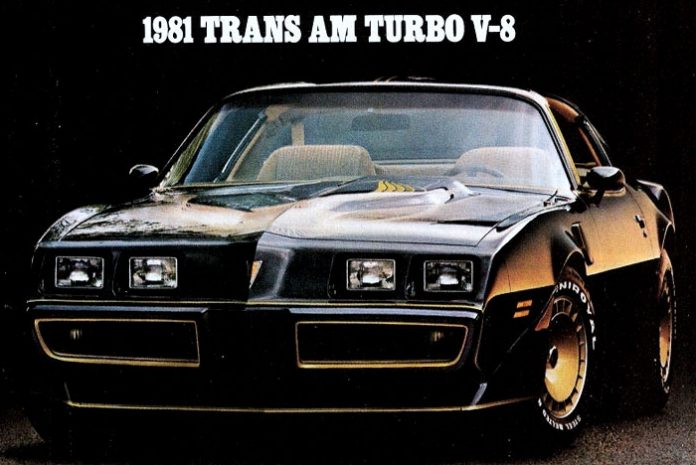









Nice trip down memory lane! What killed Pontiac was the US government convesion of GM into Government Motors during the Great Recession. GM was forced to consolidate to save $$ and dropped Pontiac over Buick simply because the Chinese favored Buick as a luxury model. This despite the fact that Pontiac outsold Buick by a wide margin. Pontiac actually had a great car with the G8 GXP when the final curtain came down! Sadly the Firebird died before 2010 but in my estimation would fly anew if brought back again!
Hi Tim,
Thanks!
I’ll disagree with you slightly, though, over the moment Pontiac died. I submit it was years before the actual cancellation – when GM cancelled Pontiac’s in-house engineering operations. Cars like the recent GTO and G8 GXP were Pontiacs in badge only – no offense meant. Just a dose of truth. They had “corporate” Chevy V8s under their hoods and so were Chevys in every meaningful way.
I love my old Trans-Am for many reasons but one of the main ones is that it’s not a rebadged Camaro. I like Camaros, too, incidentally. I have owned three of them. But when I buy a Pontiac, I want a Pontiac engine under the hood!
Corporatizing everything really hurt GM but those who did it were likely retired by the time the hard consequences became unavoidable in the 2000s. GM destroyed their customer base. GM’s core customers were not loyal to GM but to Pontiac, Oldsmobile, etc. Making everything warmed over chevies simply cast them all out into the wilderness where they found other cars to buy.
Hi Brent,
Yup; I lost interest in Pontiac after Pontiac became a reseller of Chevys. It’s such a shame, too. The third generation Firebird was a beautiful car and if it had been available with a Pontiac V8 (an improved version of the 301, with a proper turbo and EFI) it would have been superior to the Camaro, as the Trans-Am was during the ’70s,w hen it achieved immense popularity (and sales).
I don’t remember that engine. Thanks Eric.
One of my favorite engines from GM in the 90’s+ was the L67 Buick 3.8 supercharged. 205HP then 240hp. Came in Park Ave’s, and some olds and chevys. Back when GM could be cool. Granted they were I think all or mostly in FWD cars (yuk). But I enjoyed them a lot.
I think GM willingly ceded it’s US dominance in order to be a major player in “The New World Order”. It sought to be an international company and the Faustian bargain it made was to cede market share to imports in exchange for a share of their markets. Furthermore, I think the ultimate design was, and still is to weaken the USA for the “Global Hegemony” administered out of Brussels.
You can thank Roger Smith- the Jimmy Carter of executives for executing that “vision”.
Hi Auric,
That could well be. The result – for GM – is that all of GM today has less market share than Chevy, by itself, had in 1970.
They really haven’t had a good CEO in decades. Just the piss poor Mary Barra types who are drilling more and more holes in the hull letting it get more and more swamped.
The electric push will likely result in the end of GM. In a lot of ways GM is already gone.
Hi Rich,
Yup.
I think I can pinpoint one of the moments when the wheel turned, too. It was in the mid-’90s, when GM caved in to the pressure exerted by African Americans on Wheels (not kidding) to buy “advertising” in the publication of the same name, a racist insert that was shoved in between the pages of other publications, similarly pressured to prove they weren’t “racist.” By publishing and subsidizing the publication of a publication focused on race.
Cockroaches will breed quickly if not crushed and the place salted with Borax.
Auric, I don’t know if you’re old enough to have been around in the 1970s when this change to imports got going in a really big way, but it was due primarily to the better quality of the imports. The Big 3 came out with a long series of turkeys (Vega, Pinto, Citation, Volare, etc.) that were half-baked, had horrific build quality, and quickly broke down. Domestic cars would arrive at the dealership with multiple flaws due to poor assembly that the dealer was expected to fix. (Sometimes they did, sometimes they did not.)
This was due mainly to the GM and the others transitioning to being run by bean counters instead of car guys. (Then there was keeping up with Uncle’s increasing demands, but the imports had to do that as well so that’s a wash.) Customers burned by quickly self-destructing Detroit tin (rather than the previously well-regarded Detroit iron) found they could buy a Toyota, Datsun, or even the venerable VW that was well screwed together and would just keep running without catastrophic failure, so they went import and never looked back. I don’t think this was due to any kind of conspiracy, but due to hubris and arrogance (particularly on the part of GM) that people would just keep buying whatever crap they pushed out the factory door – because after all, they were GM.
‘This was due mainly to the GM and the others transitioning to being run by bean counters instead of car guys. ”
Oh hell YES, this in spades at all three of the Big Three. AMC was pretty much exempt, being on the verge of bankruptcy and having some real car guys doing miracles with what they had (AMX, Hornet). MoPar abosorbed AMC and got a temporary brain transplant, which, with Iacocca, geve them a fighting chance for a while. MoPar had that turd Eaton later, and that brainless beancounter in the 60’s, Newberg. Ford suffered with that brilliant idiot McNamara, and GM…ah, GM, there is a lot of ruin in a company as big as GM. Their incompetent management proved it. All of the above to the accolades of Wall Street, until they stopped clapping.
Know who was most responsible for Ponchos being different? I would nominate John Z. Delorean, his tenure at Pontiac gave the marque some real different and unique cars to talk about and savor all these years later, like the Tempest, the OHC inline 6, etc. etc.
Hi Jason,
There is another angle to this story. It is Uncle – of course. What happened was that Uncle – via the Clean Air Act of 1970 – force-retired practically every vehicle platform made by American companies, who had to rush to market smaller cars and – at the same time – Band Aid their existing models with crude emissions and saaaaaaaaaaaaaaaaaaaafety systems they were never designed to incorporate. This resulted in poor quality control; shit vehicles.
But the Japanese specialized in small cars. They didn’t take a hug loss on their existing lineup of cars. They were given a huge competitive advantage over American car companies by the American government. This doesn’t take away from the fact that the Japanese made high-quality cars. But it does put things in context!
I’ve tried to make that point to people many times, that the big three had freshly designed engine families that would need to be around for 25 years when that all started to hit about five years into their life cycle. It was a catastrophic kludge fest. The money was spent, the time used, they had muddle through.
Now one could say that they should have been making cleaner engines and I agree they should have. But the government had decided on the ‘prove harm’ concept of pollution and thus they would need to count on the customer to care about and pay more for cleaner exhaust. Good luck with that. Had the government did the property rights thing with pollution decades prior then the automakers would have been making cleaner vehicles because the entire way pollution would be thought of would be different and there would have been private standards probably as early as the 1930s. While voluntary these standards provide a defense that they are following best practices. That is if someone sued they would be protected by showing they met 3rd party standards.
Private standards are what most products to this day still rely on. They are slowly notched up in various terms. Slowly because the standards are driven by knowledge and innovation not political dictates. Often the political dictates cause huge disruptions, poor products, or compliance becomes a regulatory illusion.
But we ended up with Nixon’s EPA and now it’s who gets to pollute by how much. A political calculation decided by would be social engineers instead of real engineers creating standards that represent best practices.
Hi Brent!
Yup. This is one of the least-known True Stories of the car business. The average person believes American cars of the mid-late ’70s were crap just because – when in fact there was a very real cause, as we’ve been discussing. I have often wondered why the Big Three didn’t make some kind of serious effort to explain what happened at the time. I suppose it was the usual corporate poltroonery.
Jason; Good points all. I grew up in the Detroit suburbs (born ’62) and had a ring side seat to the total gutting of once great car makers and the wretched products they pushed on us. We went from 440 Super Bees to Volares, Continentals to Granadas, and 454 Chevells to Vegas. The difference between 1971 and 1977 was breathtaking. The fit and finish sucked, the metal was crap- tin as you say. And rust prone. Paint colors went from Inviolate Purple and Big Bad Blue to baby shit brown and south of the border tan. I recall the Cadillac Talisman in 74 with the interior of French King’s bedroom. Eldorados that were 19 feet long and nearly 7 feet wide and hauled ass! Cars were exciting in the 50s-early 70s then we were fed a shit sandwich and told to like it. I remember the Hondas with the ugly rubber framed back window that we all laughed at. In 10 short years we all wanted a Honda rather than anything The General made.
Arrogance? You know it! Garbage quality? Yep. But I also think the bullshit “Arab oil embargo” and the fall of GM were indeed conspiracies. I think it was all planned out in advance- not some accidental alignment of bad luck. I agree that doing stupid things leads to bad consequences and the big 4 (now small 3) were serial stupid. But, I lean toward “on purpose” when really big money is involved- and wrecking America is a clear big money (read central banks) plan.
Look what globalism has done to our heavy industries- US auto makers, US steel manufacturing, US Petroleum extraction and refining- just those 3 accounted for the major portion of our wealth creation and attendant lifestyle. All of them were intentionally gutted. If it weren’t for Orange Man Plan we would be heading for the gurgle after the flush about now.
The wife bought a brand new Pontiac Gran Prix in 77, with the 301 motor. Pretty car, powder blue with white vinyl top and interior. That car was way too heavy for that motor, and it performed like a dog. Course, most other new cars at that time were pretty much the same. What I remember most though, is that because it was a fairly unique engine, it was always a bitch to find parts, even plugs, oil and air filters, etc.
Hi Florida,
Yup – the 301 Pontiac is a completely different engine. It does not share any major parts with the 326/350/389/400 or 428/455 Pontiac V8s. Different block and heads, crank – etc. That makes it harder to deal with today vs. the other Pontiac V8s, which you can “mix and match” in an almost infinite number of possible combos and for which there is a large aftermarket supply chain.
But that’s because those other Pontiac V8s all date back to the mid-1950s and millions were made The 301 was only made for a few years and never had a chance to develop into something other than what it was.
Eric- I wonder if the 301 had any origin in the 303 ? That was some engine! The Ram Air V 303 tunnel port that Pontiac developed for the SCCA Trans Am Racing Series was the stuff of legends. The lore has it that the 303 aluminum head flowed more CFM than a 426 Hemi head and the little poncho could twist to 8200 RPM and make 525 HP. I saw a 303 head once in the 70s in a dirty machine shop in Detroit. The ports looked like storm drains. It was light as a feather. I was used to SBF heads back then so this thing looked like it came out of a SiFi movie. Man it’s hard not to love the Pontiacs!
Hi Auric,
The 303 was, indeed, Pontiac’s attempt to meet the 5 liter rule for SCCA Trans-Am racing (like the Chevy 302 in the ’67-’69 Z28). My recollection is the block was an all-new casting specific to that engine while the heads were – as you say – tunnel port type and designed to facilitate extremely generous airflow and very high RPM.
I was told by Bill Porter – whom I interviewed back in the ’90s – that if you knew the right people you could buy one of these over the counter. Pontiac didn’t make many – and they are probably the rarest Pontiac engine ever made.
And, as it turns out, the 303 and 301 do have some genes in common:
“The 301 was offered from 1977 to 1981 and also installed in other GM cars during those years. The 301 had a 4.00″ bore and 3.00” stroke for 301.6 cu in. The 301 block was based in part on designs for the “short deck” 303 cu in engine designed for the Trans Am series, it had a shorter deck than the big V8, and used thin-wall castings to reduce weight. The crankshafts were also unique in the fact that they featured only two counter weights instead of the usual five, plus lightened connecting rod journals. This lighter weight design was less than the Chevrolet small-block V-8. Power output ranged from 135 hp to 170 hp. The heads were a completely new design featuring siamesed intake ports. The short-deck block and different intake ports also required the design of a new intake manifold. The Pontiac 301 EC (Electronic Controls) version offered in 1981 produced 155 hp and 245 ft lbs of torque.”
More Pontiac stuff here: http://wildaboutcarsonline.com/cgi-bin/pub9990262549620.cgi?categoryid=9990357142920&action=viewad&itemid=9990390674339
That makes total sense. I can’t imagine all that research, tech, tooling and general know-how Pontiac threw at the 303 not being used at some point in the future.
Too bad the effin’ suits on the 14th floor of the Fisher Building crushed Pontiac’s racing efforts. Were it not for the skunk works that slipped a precious few gems such as the RAV 428 and the SD we’d be stuck with Chevy as the GM performance marque. For my tastes the Buick Stage 1, the 455 HO Olds and the Pontiac racing products were far more desirable, interesting, formidable and fun than the mass produced Chevy stuff.